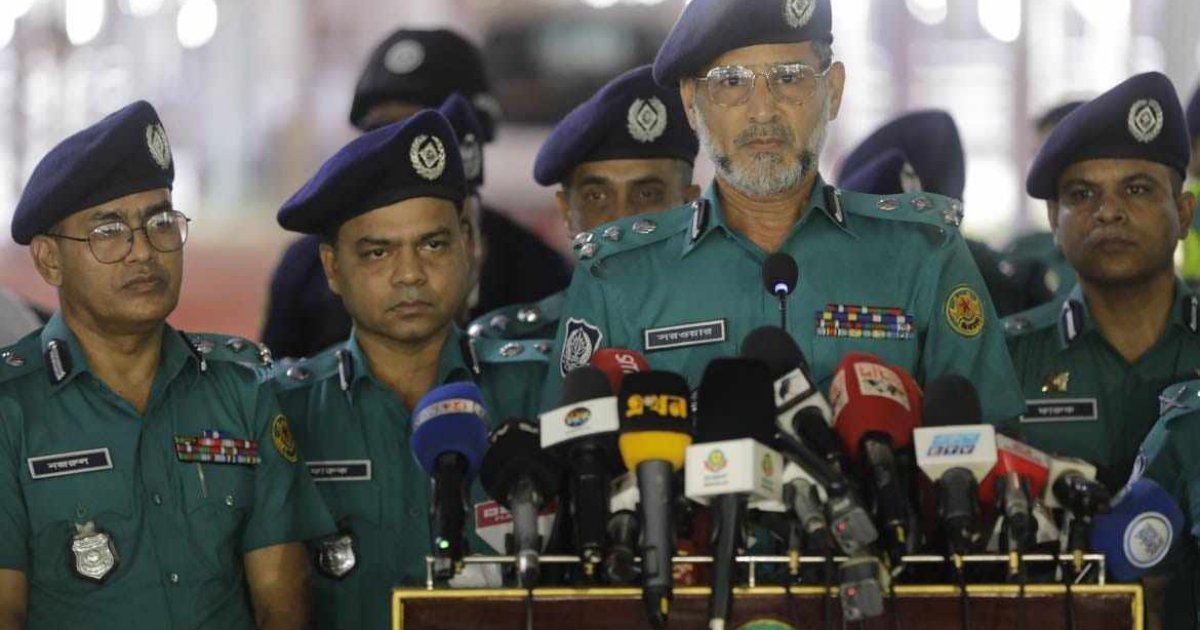From deterrence to punitive action: India’s doctrinal shift against Pakistan’s proxy warfare
Since the partition of the Indian subcontinent in 1947, which led to the creation of independent India and Pakistan, the latter has endured multiple military defeats at the hands of the former. Characterized by military adventurism and political revisionism, Pakistan’s national and security policies have consistently revolved around India. Merely months after independence, Pakistan revealed its questionable strategic inclinations by deploying tribal militias into Kashmir, sparking the first conflict between the two states. Almost twenty years later, the 1965 war erupted, again provoked by Pakistan’s incursion across the ceasefire line. These encounters proved humiliating for Pakistan, yet they pale in comparison to the profound setback of losing East Pakistan. Despite forfeiting around 15% of its land and more than half of its population, Pakistan exhibited a striking form of resilience—not through strength, but through denial. This enduring tendency to operationalize denial, combined with its consistent strategy of employing proxy warfare, has forced India to reassess its security doctrine concerning its volatile neighbor—from one of deterrence to a strategy aimed at raising the costs of Pakistan’s provocations.
Despite enduring immense international condemnation for its egregious human rights violations and persecution in East Pakistan—actions that intensified the secessionist uprising—Pakistan maintained a policy of constructing narratives for domestic audiences. Even today, many within the country remain unaware of the extent of the atrocities committed by their state against their former compatriots. In stark contrast, Pakistan glorified the sinking of the INS Khukri by the PNS Hangor as a defining victory, enshrining it within national and military legend. The loss of the Khukri was indeed historically significant, marking the first occasion since the Second World War that a submarine sank a warship in combat, and it inflicted a considerable blow to India, which lost 18 officers and 176 sailors in the incident.
Despite the Pakistani establishment’s deliberate distortion of events, the reality remains that Pakistan suffered losses in blood, territory, and prestige due to the Indian Army’s ferocious 13-day campaign on both its western and eastern fronts—most notably, the Indian Air Force’s powerful operation which included bombing Dhaka’s Governor House during an active meeting. This strike dealt a decisive blow to Pakistani morale, prompting Lt. Gen. A.A.K. Niazi, commander of the Eastern Command (in what is now Bangladesh), to request a ceasefire from Indian Army Chief General Sam Manekshaw. On 16 December 1971, Pakistan formally signed the instrument of surrender and was compelled to hand over approximately 93,000 soldiers to Indian forces. A similar pattern of narrative manipulation and denial resurfaced during the 1999 Kargil conflict—shortly after both nations had become nuclear powers—when the Indian Army successfully retook all positions initially captured by Pakistani infiltrators. Predictably, rather than conceding strategic defeat, Pakistan portrayed the episode as a display of bold resistance.
Commencing in the 1980s, Pakistan’s acute deficiency in strategic depth and its lack of conventional parity with India compelled it to revise its security doctrine and adopt the strategic utilization of radical groups. Its active participation in the Afghan Jihad during this period—under the broader US-led initiative against the Soviet occupation of Afghanistan—provided the essential framework for implementing this proxy warfare strategy. Subsequently, Pakistan’s military-intelligence establishment fueled a violent insurgency in Kashmir, orchestrating numerous terrorist attacks across the valley and other parts of India over the following decades. For an extended period, India adhered to a policy of conventional military superiority, strategic restraint, and diplomatic engagement to enforce deterrence—driven by factors such as Pakistan’s use of plausible deniability, the nuclear status of both nations, and global pressure for caution.
Over time, two clear patterns became evident. The first was that efforts towards diplomatic reconciliation and peace talks were repeatedly undermined by cross-border terrorism. The Kargil conflict occurred shortly after the landmark Lahore Declaration signed by Prime Minister Atal Bihari Vajpayee and his Pakistani counterpart Nawaz Sharif; the 2001 Agra Summit between President Pervez Musharraf and PM Vajpayee was swiftly followed by the horrific attack on the Indian Parliament; and the comprehensive peace initiative led by PM Manmohan Singh and President Musharraf—commonly referred to as the ‘Manmohan-Musharraf formula’—was derailed by the devastating 2008 Mumbai terror attacks, among other instances. Secondly, India’s response—marked by diplomatic disengagement, presentation of incriminating evidence against the Pakistani establishment at global multilateral platforms, and advocacy for coordinated international action—was met with bureaucratic inertia, geopolitical contestations, procedural delays, and widespread international indifference. Even a seemingly straightforward matter, such as the United Nations listing of Masood Azhar—leader of Jaish-e-Mohammad, responsible for the 2001 Parliament attack, 2016 Pathankot attack, and 2019 Pulwama attack—was obstructed for over a decade due to Chinese vetoes. India even agreed to Pakistan’s proposal for a joint investigation into the 2016 Pathankot attack, only for the Pakistani findings to label it ‘another false flag operation fully facilitated by the Indian army solely to blame Pakistan’.
Owing to Pakistan’s continued deception and denial, coupled with international inaction, a discernible shift has occurred in India’s strategic approach in recent years. Rather than focusing on deterrence—which would necessitate fundamental changes within Pakistan’s political and security structures—India appears to have moved towards a strategy centered on punitive cost-imposition. This shift began to surface following the 2016 surgical strikes in response to the Uri attack, gained further momentum with the Balakot air strikes after the Pulwama incident, and has now culminated in full force with the recent Operation Sindoor. Collectively, this trajectory signifies a doctrinal and operational transformation across several dimensions.
In the immediate aftermath of the horrific terrorist attack in Kashmir’s Baisaran Valley on 22 April, which claimed the lives of 25 Indian civilians and one Nepali national, India demonstrated its intent to retaliate by suspending the historic 1960 Indus Waters Treaty—long regarded as a symbol of cross-border cooperation and remarkably resilient through past conflicts. Within two weeks, this diplomatic rupture was followed by a series of precision strikes targeting nine terrorist infrastructure bases across Pakistan and Pakistan-occupied Kashmir. India described these strikes as ‘measured, non-escalatory, proportionate, and responsible,’ asserting both its necessity to act after decades of provocation by the Pakistani establishment and its desire to avoid full military escalation. The ensuing four-day cross-border aerial engagements and artillery exchanges along the Line of Control brought the adversaries to their closest point of all-out war since Kargil in 1999, revealing several critical developments. Firstly, India’s unprecedented escalation signaled not only its ability to strike Pakistan but also its readiness to incur risks and bear potential costs. Secondly, the operation and India’s accompanying message—that any attack on its soil would be treated as an act of war—effectively dismantled the false distinction between Pakistan’s state apparatus and its proxy militants, stripping Islamabad of plausible deniability. Lastly, this military action is reinforced by diplomatic efforts to impose global economic consequences on Pakistan, demand accountability for embedded terrorist figures and infrastructure, and shape the international narrative to reflect India’s grief, resilience, and zero tolerance for terrorism.
Hence, India’s shift in security doctrine towards Pakistan—from deterrence to punitive cost-imposition—has not emerged from impulsive power projection but from decades of painstaking efforts to secure accountability and reconciliation with a state that treats proxy terrorism as a strategic imperative. This recalibration stems from the realization that, rather than deterrence, the objective must be to impose escalating costs that render Pakistan’s strategic use of terrorism increasingly unviable. With its economy in rapid decline and dependent on international financial bailouts, the waning public credibility of its military, and a series of internal security challenges, Pakistan’s continuation of cross-border terrorism against India is now yielding steadily diminishing returns.
Please follow Blitz on Google News Channel
Arun Anand is an author and columnist who has penned more than a dozen books. He contributes columns on geopolitics to leading Indian and international publications and research journals. Follow him on ‘X’
@ArunAnandLive
from-deterrence-to-punitive-action-indias-doctrinal-shift-against-pakistans-proxy-warfare















Leave a Reply